Blackout hits Spain and Portugal: what happened and what’s next
In this article, we explain what an electricity blackout is, how it can be resolved, and provide ongoing updates as the situation in Spain and Portugal unfolds.
Around noon on April 28, 2025, a major blackout struck the Iberian Peninsula. The cause is still unknown. In this article, we explain what an electricity blackout is, how it can be resolved, and provide ongoing updates as the situation unfolds.
What is an electricity blackout?
An electricity blackout is an extreme event that can affect electricity systems and consists of a sudden, complete interruption of electricity supply in a certain area. A blackout is normally the ultimate result of a major imbalance between the generation and consumption of electricity that was not healed in time by the entities operating the system, the so-called system operator(s).
Electricity systems around the world normally use alternating current (AC). The electricity flowing in those systems goes back and forth at a certain frequency, measured in Hertz (Hz). A constant balance between injections and withdrawals of electricity from and into the system is required to ensure the system frequency is stable. Any imbalance, even only for a fraction of a second, tends to deviate the frequency from its reference value (50 Hz in Europe, 60 Hz in the US). If the deviation from the reference value becomes too big, the protection systems that are spread all over the electricity system start to kick in and disconnect the assets from the grid in order to protect them from physical damage.
Disconnections due to protection systems apply to both generation and consumption assets. Ultimately, they lead to the interruption of electricity flows in the system. All lights are then off and this explains the name given to the event. Electricity supply can still be possible locally, if a certain portion of the system can work in an islanded mode.
Why does a blackout happen?
There can be several reasons for the origin of a blackout. It can be the failure of a major power plant or a major transmission line. It can also be the result of a cyberattack or extreme weather conditions, impacting the functioning of the electricity system.
In any case, an imbalance between electricity injections and withdrawals occurs and the deviation of the system frequency from the reference value gets too big to handle before the system operator can orderly intervene by disconnecting on purpose certain loads or calling into production some power plants that were kept in reserve.
In general terms, an electricity system tends to be more prone to experience blackouts the weaker its electricity network is and the lower the system inertia is. A limited availability of resources that can be activated in a short time span to restore the balance between injections and withdrawals can also increase the risk of blackout. On the contrary, a stronger (i.e., more meshed) network, a higher level of system inertia, and a larger amount of flexible resources that can be mobilised quickly reduce the risk of a blackout.
How is a blackout solved?
A blackout can last from minutes to days. System operators affected by a blackout follow precise procedures to gradually restore the electricity supply. They normally activate first the power plants which have the so-called black-start capacity. These are plants, such as hydropower plants, gas turbines or batteries that can start up and restore operation independently from the availability of electricity in the network. At the same time, system operators gradually reconnect the distribution grids and the corresponding loads. Power plants with no black-start capacity are also reactivated thanks to the electricity supplied via the portions of the grid that have been re-energised.
What did happen today in the Iberian Peninsula?
Around noon on 28 April 2025, a major blackout hit the Iberian Peninsula. The causes of it are not yet known. However, it is possible to observe the dimension of the blackout by consulting the information shared close to real time by the European electricity system operators on the ENTSO-E Transparency Platform.
Between 12:30 and 12:45, the electricity load in Spain declined from roughly 25,000 MW to 16,000 MW. It declined further in the following 15 minutes, when it went below 12,000 MW. A gradual recovery has started only about 13:45.
Figure 1: Total load in Spain (day-ahead total load forecast versus actual total load) on 28 April 2025, source: ENTSO-E transparency platform.
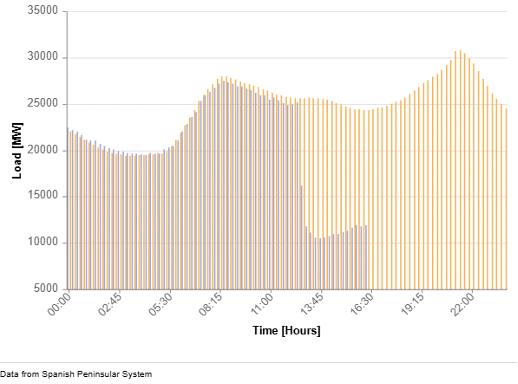
In the same minutes, the output of electricity power plants in Spain has been reduced significantly. In particular, nuclear reactors, hydro power plants and power plants running on fossil fuels have been mostly switched off (see Fig. 2). Wind and solar production has been significantly curtailed as well.
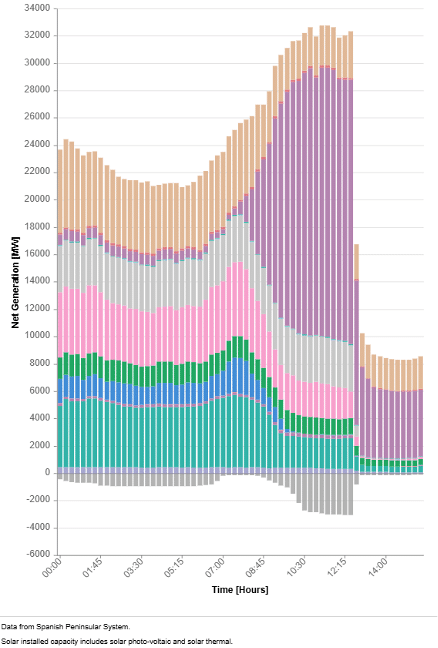
Figure 2: Actual generation per production type in Spain on 28 April 2025, source: ENTSO-E Transparency Platform.
Something similar has happened in Portugal (see Fig. 3 and 4).
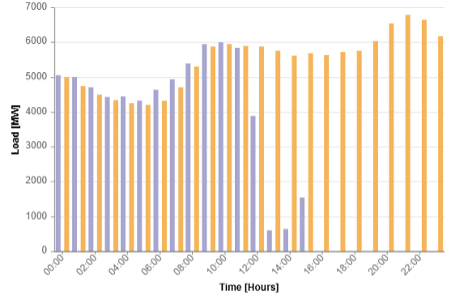
Figure 3: Total load in Portugal (day-ahead total load forecast versus actual total load) on 28 April 2025, source: ENTSO-E transparency platform.
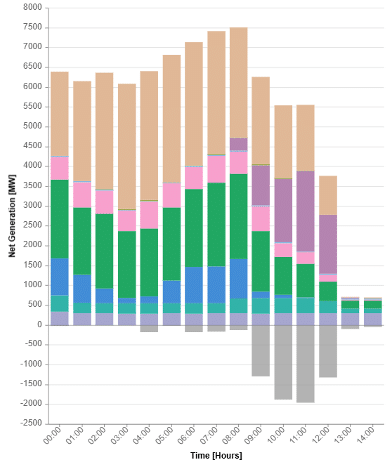
Figure 4: Actual generation per production type in Portugal on 28 April 2025, source: ENTSO-E Transparency Platform.
It is interesting to observe that the French system was able to withstand the blackout in the neighbouring Iberian peninsula (see Fig. 5 and 6).
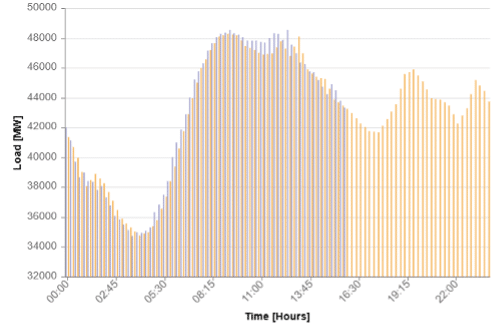
Figure 5: Total load in France (day-ahead total load forecast versus actual total load) on 28 April 2025, source: ENTSO-E transparency platform.
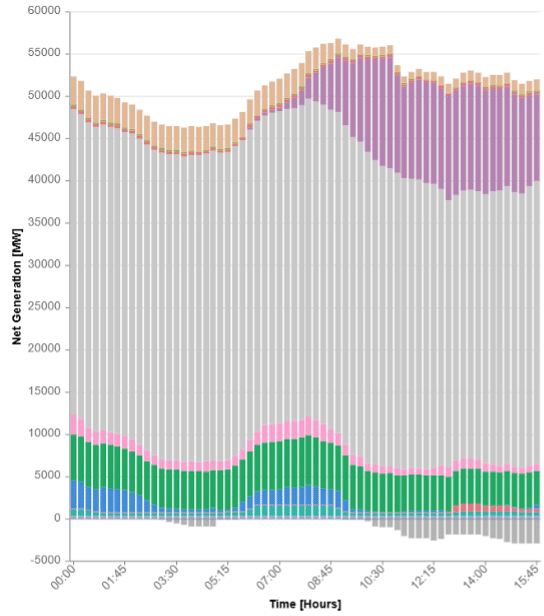
Figure 6: Actual generation per production type in France on 28 April 2025, source: ENTSO-E Transparency Platform.
By looking at the flow of electricity between Spain and France, it is clear that Spain was exporting electricity to France in the late morning, with amounts fluctuating sharply between 250 and 1700 MW. At 1 pm, the flow of power from Spain to France got to zero and since then Spain has become an importer of electricity (Fig. 7).
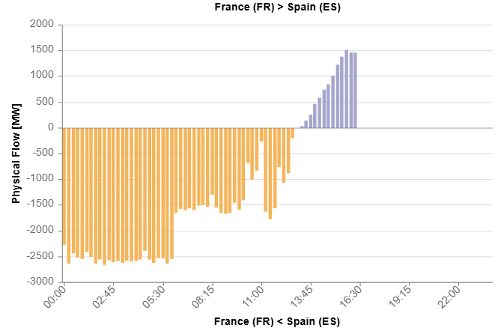
Figure 7: Cross-border physical flow between France and Spain, source: ENTSO-E Transparency Platform.
It is important to note that the power flow across the French-Spanish border was relatively small compared to the overall load in the two countries and also below the net transfer capacity available (see Fig. 8).
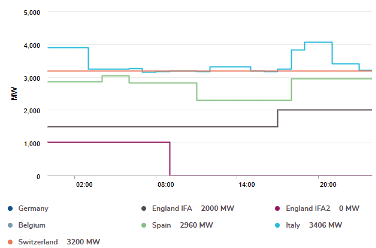
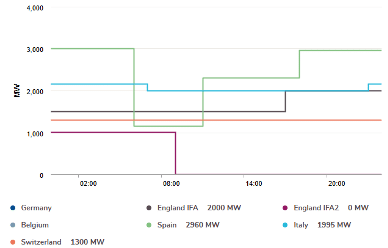
Figure 8: Daily forecast net transfer capacity between France and its neighbours, source: RTE. Note that the top figure refers to export capacity and the bottom figure to import.
On the morning of 28 April, Spain was also exporting electricity to Portugal, at least until noon, i.e. roughly 30 minutes before the black-out started (Fig. 9). Data after that time were not yet available in the late afternoon.
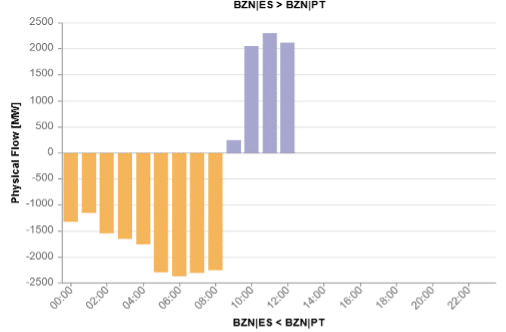
Figure 9: Cross-border physical flow between Spain and Portugal, source: ENTSO-E Transparency Platform.
The FSR electricity team is following the developments. More updates will follow over the coming days.






